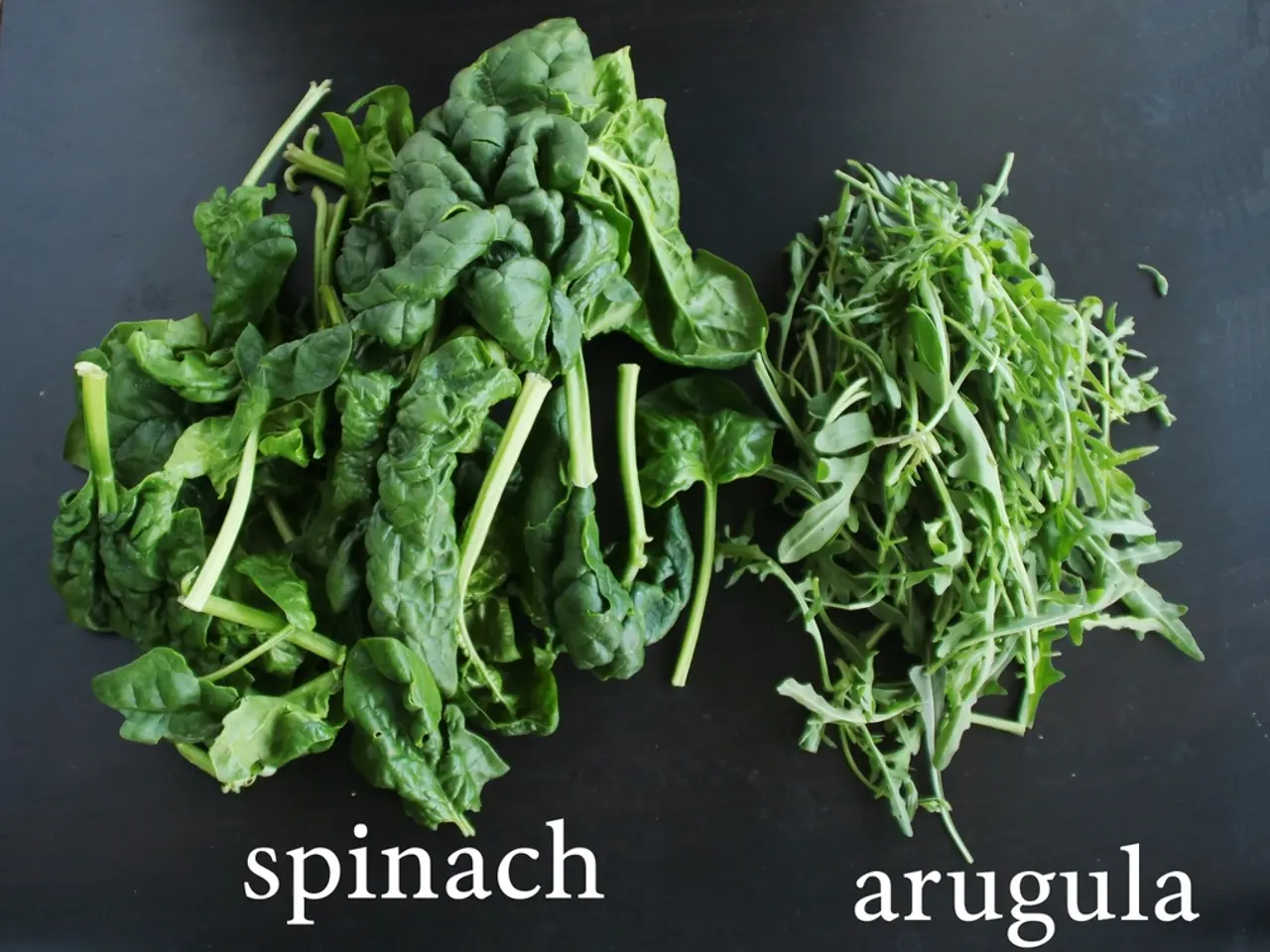Planting Seeds in June: Tasks and Requisites
Growing Cornflowers and Spring Onions in Your Garden
Sowing cornflowers and spring onions in your garden can bring a burst of colour and flavour to your outdoor space. Here's a guide on how to grow these two popular plants.
Cornflowers (Centaurea cyanus)
Cornflowers are hardy annuals that attract pollinating insects and make beautiful bouquets. To grow cornflowers successfully, follow these steps:
- Sowing time: Sow cornflower seeds in early spring or autumn (September to October) for earlier blooms the following year. Autumn sowing can give earlier flowering in spring and summer.
- Site selection: Choose a sunny location that receives 6 to 8 hours of sunlight daily to promote strong stems and healthy foliage.
- Soil preparation: Prepare the soil by removing grass and weeds to have bare soil for better seed-to-soil contact. Loosen the soil to about 12 inches deep and enrich the top 2 to 4 inches with compost to improve drainage and fertility.
- Sowing method: Mix the cornflower seeds with sand to help distribute them evenly and sow them on the soil surface or in shallow drills. Press the seeds lightly into the soil for good contact and then water gently to keep the soil moist during germination.
- Watering and care: Keep the soil moist but not waterlogged during germination. Once established, cornflowers are relatively drought-tolerant but benefit from moderate watering during dry periods.
- Additional tips: Cornflowers grow tall and bushy, making them excellent for cutting gardens and attracting pollinators like bees. They can also be grown in containers.
By following this method—sowing in early spring or autumn, providing full sun, well-prepared soil, and regular watering—your cornflowers should grow successfully and produce abundant blue blooms throughout summer.
Spring Onions
Spring onions, also known as scallions, are a mild-flavoured variety of onion with strong, straight stems. They can be sown outdoors this month in small batches to provide continuous harvests throughout summer and into autumn. Simply sow the seeds thinly into well-prepared soil which has already been watered, and thin the plants to 15cm apart when large enough to handle.
Other varieties to consider include 'White Lisbon', ideal for containers, and 'Guardsman', a popular choice for its strong stems.
In addition to cornflowers and spring onions, there are several other plants that thrive in spring and summer gardens. Forget-me-nots make a great addition to spring container displays and are available in blue, white, and pink. They prefer moist, but well-drained soil in sun or partial shade and can be sown in-situ in June and will readily self-seed once established.
Radishes, salad leaves, rocket, and round carrots such as 'Rondo' and 'Paris Market 5' are particularly suited to container growing. Lettuces like 'Tom Thumb', 'Lollo Rossa', and 'Romaine Ballon' are ideal for growing in containers as well, with lettuces ready for picking between six weeks (for loose-leaves) and 10 weeks (for hearting lettuces).
For a more diverse garden, consider planting runner beans like 'Hestia', 'Jackpot', 'Painted Lady', and 'Romaine Ballon' which can be sown outside this month and should be transplanted into the garden now. 'Purple Haze' and 'Yellowstone' are other root vegetables that can be sown now for harvests later in the season.
To provide continuous cropping and avoid gluts, sow vegetables like lettuce, beetroot, and spinach successionally over the next few weeks. For a splash of colour, try 'Zinnia' varieties such as 'Lilliput Mixed', 'Benary's Giant Lime', 'Benary's Giant White', and 'Queen Lime Red', which come in a range of vibrant colours and sizes.
Finally, don't forget about the edible flowers! 'Calendula' 'Sherbet Fizz' has creamy-copper tones, while 'Purple Haze' has deep purple skins with a surprise orange center when sliced. 'Snowstorm' and 'White Lady' have pure white flowers that are less prone to being eaten by birds. The wild form of water forget-me-not (Myosotis scorpioides) can also be sown outside in June and spreads along the edges of ponds and through bog gardens.
'Rainbow Mix' is a combination of red, orange, yellow, and purple carrot roots with subtly different flavors. Sweet Williams (Dianthus barbatus) bring rich color and scent to the garden in late spring and summer, making superb cut flowers. 'Classic Magic' is a mix of white, deep purple, and smoky mauve flowerheads.
By choosing the right plants, providing the right growing conditions, and sowing successionally, you can enjoy a bountiful harvest from your garden throughout the summer months.
Sowing spring onions in small batches during this month promotes continuous harvests throughout summer and into autumn. Home-and-garden lifestyle enthusiasts might also find pleasure in growing other vegetables in containers, such as radishes, salad leaves, rocket, round carrots, and lettuces.
Transitioning from the garden to the kitchen, the abundant harvest can be used in various recipes for food-and-drink preparation. Cornflowers can make beautiful bouquets that add vibrancy to the fashion-and-beauty sector, as well as attract pollinating insects in your outdoor space.
Moreover, experimenting with edible flowers like calendula, violas, and sweet Williams can elevate your dishes, offering a delightful culinary adventure for both cooks and diners. With careful sowing and nurturing, raising beds filled with these plants can provide an exquisite blend of colours, flavours, and textures.




